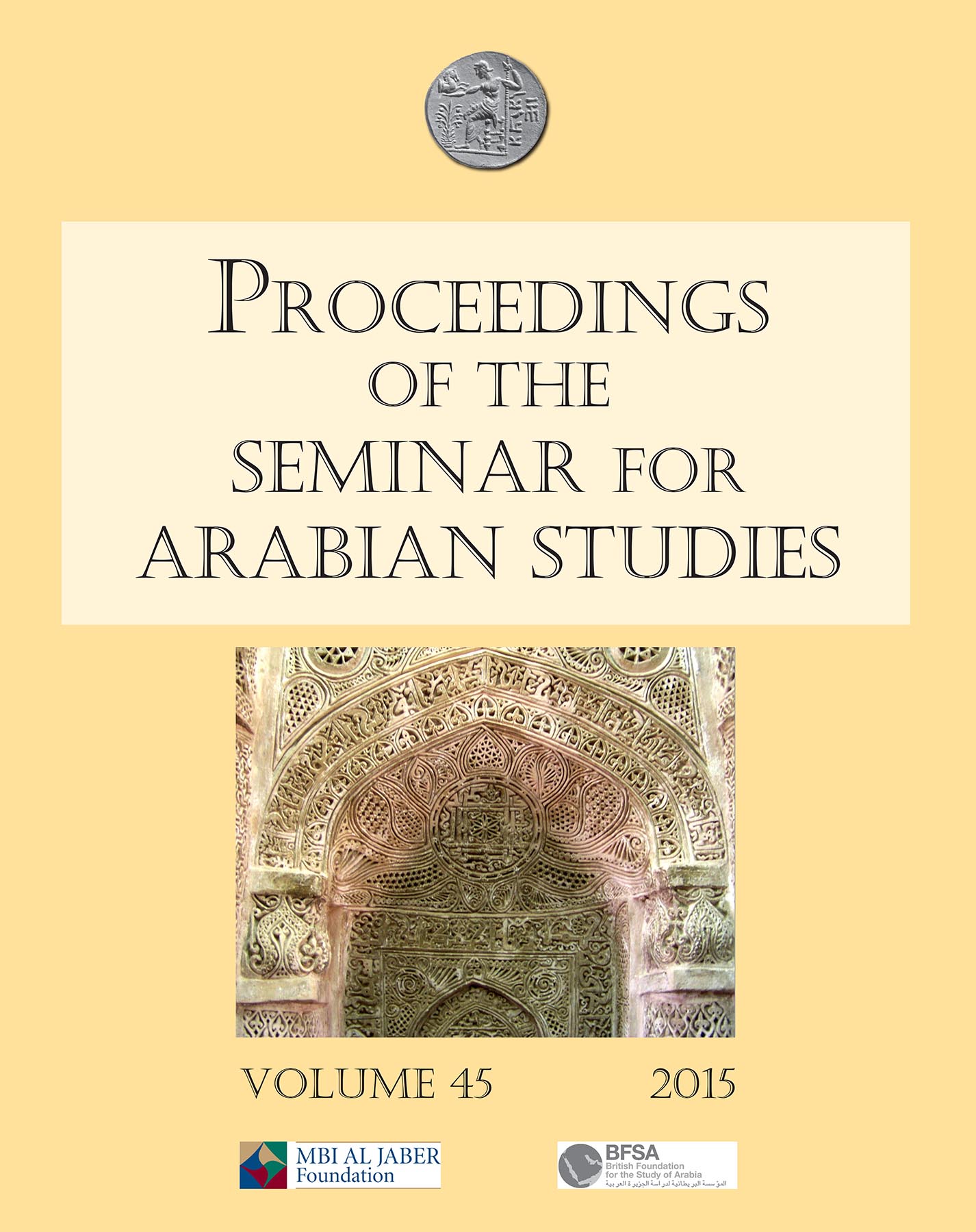Filling a blank: new excavations at an early Islamic site at Oud Al Toba/Muataredh in al-ʿAyn, UAE
Keywords:
early Islamic period, Tawam, mud-brick structures, aflāj, oasesAbstract
An early Islamic falaj (pl. aflāj) and a mud-brick mosque were discovered c. 1999-2001 in the middle of al-ʿAyn City, UAE. Results of the excavations carried out at the site have been published in al-Tikriti 2003 and incorporated into al-Tikriti 2011. The aim of this paper is to present the results of the resumed rescue excavations at the site that began in June 2011. A network was defined of aflāj and more mud-brick structures unknown in the region before our new excavations began. The discovery of these structures is significant as they provide the — so far — only available evidence for the presence of early Islamic (eighth-tenth century) standing buildings in the al-ʿAyn region. Cemeteries and settlement sites exhibiting Bronze and Iron Age architectural remains are widely known in the region, in contrast to late pre-Islamic and early Islamic sites. The discovery of a number of aflāj and open channels covered by a thick layer of sand and modern debris indicates that an extensive oasis must have existed in this part of al-ʿ Ayn city or close to it. This discovery may cast light on the history of the oases in al-c Ayn, which has its origins in the beginning of the Iron Age. The ongoing archaeological activities, using traditional methods supported by geophysical surveys, have demonstrated that the site is much more complex than was originally thought. Tantalizing results have tempted the excavators to link the site with the ancient historical city of Tawam, widely known as the old name of al-ʿAyn.
References
.
Published
How to Cite
Issue
Section
License
Archaeopress Publishing, Oxford, UK


